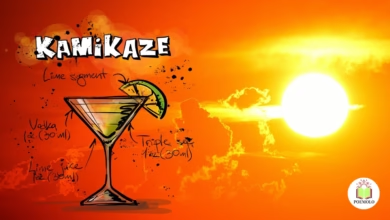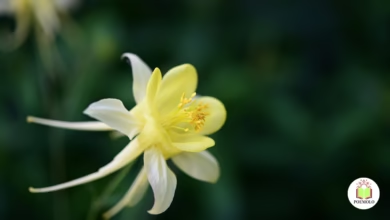Poetry has always served as a powerful medium for exploring complex themes of identity, particularly when it comes to the intricate and often painful experience of racial identity.
Poets have used verse to reflect their experiences, confront societal issues, and delve deeply into the multifaceted nature of racial identity. In doing so, they use various tones to express their emotions, views, and the broader cultural and historical implications of their racial experiences.
But what are the different tones in poems about racial identity? How do these tones influence readers’ understanding of the subject matter?
In this article, we will explore the variety of tones found in poems about racial identity, explaining how poets use these emotional nuances to convey themes of oppression, resilience, pride, anger, grief, hope, and empowerment.
We will examine how different tones within poetry contribute to the way readers perceive issues like racial inequality, historical injustices, and the ongoing struggle for equality. By the end, you will have a deeper understanding of how tone works in poems about racial identity and why it is so essential to the impact these poems have on their audiences.
What Is Tone in Poetry?

Before diving into the different tones in poems about racial identity, it’s important to understand what “tone” means in poetry. Tone refers to the poet’s attitude toward the subject of the poem, conveyed through their choice of words, rhythm, imagery, and emotional expression. The tone of a poem can evoke specific emotional responses from the reader, guiding their understanding of the poem’s deeper meanings and themes.
In poems about racial identity, tone plays a significant role in shaping how the reader interprets experiences of racial discrimination, pride, community, and the complex emotions tied to racial heritage.
A poet’s tone can range from anger to hope, from pride to sadness, and even defeat. The tone can also create a sense of urgency, confrontation, reflection, or contemplation, depending on the poet’s approach.
“Shadows and Light”
I am the echo of a song long sung,
A melody buried in the roots of time,
My skin, a map of stories unsung,
A legacy of struggles in every line.
They told me I was less,
A shadow beneath their gaze,
But I rise with fire, I confess,
I refuse to be confined by their maze.
I wear my history like a crown,
Each scar, each scarred face,
An anthem that will not drown,
In the depths of this hollowed place.
I sing of ancestors who fought,
Their voices strong through the years,
I wear their power, never caught
In chains of doubt or drowning tears.
But there are moments—silent, cold,
When the weight of the world bears down,
When sorrow swirls, fierce and bold,
And I wonder if I can still stand my ground.
Yet even then, I rise, I stand,
Like roots that grip the earth below,
I am not broken, I am sand—
Grains shifting, but never letting go.
For light is born from darkness deep,
And in my veins, the sun will climb,
Through every wound, through every weep,
I know my spirit is pure, divine.
And though the world may see a mask,
I wear it proudly, for it hides
Not weakness, but the strength they ask,
The fire that burns within, untied.
So I will laugh, I will sing,
And in their shadows, I’ll take flight,
For I am whole, a living thing,
And my identity will never dim the light.
Analysis table about “Shadows and Light”
| Aspect | Analysis |
| Tone | The poem shifts through various tones: pride, resilience, sorrow, and hope. Initially, it expresses strength and defiance, then transitions to moments of reflection and sorrow, before concluding with empowerment and hope. |
| Theme: Racial Identity | The poem explores racial identity by reflecting on both personal and collective histories. It emphasizes the poet’s connection to ancestral struggles and cultural pride. |
| Theme: Resilience | Throughout the poem, resilience is shown in the speaker’s refusal to be broken by the challenges imposed by society. They rise above hardships, connecting to ancestral strength. |
| Theme: Empowerment | The speaker asserts their worth, stating that their identity, though often masked or misunderstood, is a source of strength and pride. This theme of empowerment is central to the poem. |
| Theme: Sorrow | The poem shifts to a sorrowful tone when acknowledging the weight of racial injustice and personal struggles. The speaker experiences moments of doubt but remains hopeful. |
| Theme: Hope | Despite the sorrow and struggles, the poem closes with a tone of hope. The speaker recognizes that their identity is a source of power, and they will rise above adversity. |
| Imagery | The poem uses vivid imagery such as “map of stories unsung,” “roots of time,” “chains of doubt,” and “sun will climb” to emphasize the connection between racial identity, history, and personal growth. |
| Metaphor | “I wear my history like a crown” symbolizes the speaker’s pride in their heritage. “Roots that grip the earth” suggests deep cultural connections, while “light born from darkness” signifies resilience and rebirth. |
| Symbolism | The “mask” symbolizes the facades that marginalized individuals are sometimes forced to wear in society, while also representing strength and survival. |
| Alliteration | The poem uses alliteration to create rhythm and focus, such as in “shadows swirls,” “silent, cold,” and “sand—Grains shifting,” which enhance the flow and emotional impact of the poem. |
| Anaphora | The repetition of “I rise” in multiple stanzas reinforces the theme of resilience and empowerment, symbolizing strength in the face of adversity. |
| Rhyme Scheme | The poem follows an irregular rhyme scheme (ABAB in most stanzas), which creates a conversational tone, allowing the poem’s message to feel personal yet impactful. |
| End Rhyme | The ending couplet uses rhyme effectively to conclude the poem on a note of strength and empowerment, reinforcing the idea that identity will never “dim the light.” |
| Allusion | The poem alludes to the broader African American experience, including slavery, systemic racism, and the enduring strength passed down through generations. |
| Emotion | The emotional spectrum in the poem captures the complexity of racial identity — pride, sorrow, hope, and empowerment are all intertwined to show the resilience needed to navigate a world of racial injustice. |
| Personification | The line “And in my veins, the sun will climb” personifies the sun, symbolizing hope and growth, reinforcing the idea that the speaker’s strength comes from within. |
The Different Tones in Poems About Racial Identity
Anger and Defiance
One of the most prevalent tones in poems about racial identity is anger. The anger in these poems often stems from experiences of racial injustice, oppression, and the frustration of feeling marginalized within a society that enforces racial inequalities.
Anger is an emotion that calls for action, resistance, and recognition. Poets who adopt this tone use it to speak out against systems that perpetuate racism and to demand equality and respect for people of color.
This tone can be seen in poems that directly confront racism, inequality, and the dehumanization of individuals based on their racial identity. Anger often emerges when a poet feels that they or their community have been wronged for far too long, and the tone serves as a means of reclaiming power, dignity, and space.
Langston Hughes, a key figure in the Harlem Renaissance, often uses an angry tone to express the frustrations of Black Americans in his poetry. In “I, Too,” Hughes not only challenges racial segregation but also asserts his right to be a full participant in American life.
The tone here is defiant, as Hughes refuses to accept the lesser position society has imposed on him. This defiance is not only about anger at the marginalization of Black Americans but also a rallying cry for a future of equality and inclusion.
Example from Hughes’ “I, Too”
“I, too, sing America.
I am the darker brother.
They send me to eat in the kitchen
When company comes,
But I laugh,
And eat well,
And grow strong.”
Hughes’s angry tone is a rejection of the notion that Black Americans should remain in the background. His defiance turns the negativity of racial discrimination into a statement of strength, determination, and hope for a better future.
Pride and Empowerment
Another dominant tone in poems about racial identity is pride and empowerment. In these poems, poets celebrate the richness of their cultural heritage, acknowledging their history and heritage with dignity and self-respect. This tone is uplifting and inspiring, often reinforcing the belief that racial identity should be embraced, not hidden, and that being part of a marginalized group carries its own unique strength.
Related Article: How to Write a Poem on Mother
For example, Maya Angelou uses an empowering tone in her famous poem “Still I Rise.” This poem speaks to the resilience of Black women in the face of systemic racism, gender oppression, and societal prejudice. Angelou’s tone is unapologetically proud and filled with confidence.
She speaks directly to the challenges and hardships faced by Black women but does so in a way that refuses to acknowledge defeat. Instead, the tone is filled with self-respect, defiance, and a promise of survival.
This tone serves to uplift and empower others who might face similar challenges, fostering a sense of community and collective strength among people of color.
Example from Angelou’s “Still I Rise”
“You may trod me in the very dirt
But still, like dust, I’ll rise.”
Angelou’s tone is not only about resilience but also about the power of self-love and a recognition that racial identity, particularly Black identity, is something to be proud of and celebrated. The reader feels encouraged to stand tall, despite any hardships, as Angelou asserts that no amount of oppression can truly break her spirit.
Sadness and Sorrow

While some poems about racial identity adopt tones of anger or pride, others convey a more reflective and sorrowful tone. These poems express the grief, despair, and emotional weight of racial injustice, focusing on the historical and personal pain that comes from being discriminated against or marginalized because of one’s race.
The tone of sadness in these poems often underscores the deep emotional toll that systemic racism takes on individuals and communities of color.
This sad tone may reflect the pain caused by racial violence, discrimination, or the loss of identity due to oppressive societal structures. It can also express mourning for lost lives and opportunities, as well as the generations of trauma passed down in communities of color.
Claude McKay’s poem “The Lynching“ is a prime example of a poem with a sorrowful tone. The poem speaks to the brutal lynching of Black men during the era of racial violence and deeply expresses grief over the senseless loss of life. The tone is heavy with pain, loss, and a sense of injustice, and the speaker’s sorrowful reflection adds to the poignancy of the poem.
Example from McKay’s “The Lynching”
“We saw him flung
To the ground in the street,
His cries like those
Of a wounded beast.”
The sorrow in this poem is not just about the death of a man but also about the dehumanization that allows such an atrocity to take place. The sadness expresses a collective mourning for those who continue to suffer under racism and for the ongoing loss of Black lives to racial violence.
Hope and Resilience
Though many poems about racial identity focus on the pain of oppression, others adopt a tone of hope and resilience, reflecting a belief that despite historical and contemporary injustices, change is possible, and strength is found in struggle.
Related Article: Did Robert Frost Write a Poem About His Wife?
This tone emphasizes the power of survival, endurance, and progress in the face of adversity. Hope in this context means not merely wishing for a better future but actively believing in one’s ability to overcome challenges and work toward equality.
James Weldon Johnson’s “Lift Every Voice and Sing” is an anthem of hope and pride in Black identity. This poem, often referred to as the Black National Anthem, emphasizes the enduring spirit of African Americans despite their struggles. The tone is uplifting and filled with optimism, encouraging those who read or sing it to continue striving for freedom and equality.
Example from Johnson’s “Lift Every Voice and Sing”
“Lift every voice and sing,
Till earth and heaven ring,
Ring with the harmonies of Liberty.”
This hopeful tone is about lifting up the voices of the oppressed and recognizing that the fight for freedom and justice is ongoing. It celebrates the strength of those who continue to rise above racial inequality and contributes to a sense of community and solidarity.
Defeat and Resignation
Not all poems about racial identity are filled with hope or pride. Some adopt a tone of defeat or resignation, where the poet expresses a sense of hopelessness or exhaustion in the face of unyielding oppression.
This tone can reflect the emotional toll of living in a world that constantly marginalizes and devalues people of color. Poets who use this tone often highlight the emotional and psychological effects of experiencing racial discrimination on a daily basis.
Richard Wright’s “Between the World and Me“ explores the deep emotional impact of racial identity, using a tone that reflects both personal and collective exhaustion. Wright’s words suggest a sense of helplessness and defeat, confronting the painful reality that, despite efforts to fight back, many people of color continue to be trapped in cycles of racial injustice.
Example from Wright’s “Between the World and Me”
“The world is a place of dark skin
Where shadows grow long,
And though we fight, we still lose.”
The tone here suggests that no matter how hard one fights, the weight of racial inequality feels insurmountable, and the systems of oppression are too deeply entrenched to overcome. This defeatist tone communicates the feeling of being trapped in a never-ending struggle against a society that does not recognize one’s humanity.
Irony and Sarcasm
Finally, some poems about racial identity employ irony or sarcasm as a tone to expose the contradictions in the way race and identity are treated by society. This tone often uses humor to highlight the absurdity of racial stereotypes, discriminatory behaviors, and the hypocrisy of those who claim to uphold values like equality while perpetuating systemic racism.
Paul Laurence Dunbar’s “We Wear the Mask” uses irony and sarcasm to reflect on the act of masking one’s true identity in order to survive in a world that devalues and marginalizes people of color. The mask in the poem symbolizes the forced performance of conformity to societal expectations.
Example from Dunbar’s “We Wear the Mask”
“We wear the mask that grins and lies,
It hides our cheeks and shades our eyes.”
The irony in this poem exposes the emotional dissonance between the public face that society expects people of color to wear and the hidden suffering they endure underneath. The tone of sarcasm adds a layer of critique to the poem, calling attention to the performative nature of racial survival in a world that imposes constraints on marginalized groups.
Conclusion
The tone in poems about racial identity is one of the most important tools poets use to communicate their emotions, ideas, and critiques of the world around them. Whether expressing anger, pride, sadness, hope, defeat, or irony, poets have the ability to shape their readers’ emotional responses and deepen their understanding of the complexities of racial identity.
Through tone, poets have the power to highlight the ongoing struggle for racial justice, the beauty of cultural identity, the pain of discrimination, and the hope for a better, more inclusive future.
By carefully choosing and manipulating tone, poets give voice to the multifaceted experience of living with racial identity in a world that often marginalizes people of color. These tones make the poems not just works of art, but powerful tools of resistance, reflection, and inspiration.
As readers, understanding the different tones in poems about racial identity allows us to connect more deeply with the experiences of those who live with the weight of race and helps us empathize with the struggle for equality and justice.





